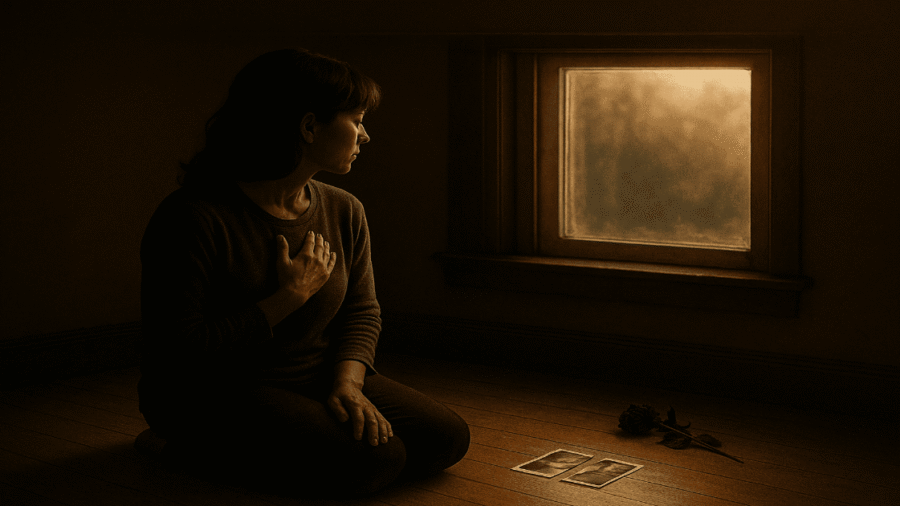Like any other love story, that is how it starts. Intense emotions, deep connection, and the belief that this person sees and understands you like no one else. as time passes, the warmth fades into confusion, fear, and emotional pain. You find yourself holding on tighter the worse things get. Then you begin to justify the red flags. You excuse the cruelty. And believe the love is real even as it breaks you.
This is not love. It is trauma bonding.
What Is Trauma Bonding?
The American Psychological Association defines trauma as the emotional reaction to a highly distressing event. And if the source of the distress also provides intermittent affection or kindness, the mind and body can get stuck in a cycle of fear and emotional dependency. This is what creates a trauma bond.
Therefore, Trauma bonding is when a strong emotional connection/attachment is formed between an abuser and their victim through cycles of abuses and intermittent reinforcement. The abuser may be kind at times and cruel at times, resulting in confusion, fear, and emotional dependency.
A Study published by PubMed in 2023 reveals that trauma bonds are especially common in relationships marked by childhood maltreatment, narcissistic abuse, or emotionally unavailable caregivers. These bonds can be seen in romantic relationships, in families, workplaces, cults, and even human trafficking situations.
A 2024 study on survivors of sex trafficking describes trauma bonding as “involuntary,” fueled by a mixture of loyalty, fear, hope, and emotional confusion. Victims often feel like they cannot leave even when they want to because the bond feels stronger than logic.
Why Trauma Bonds Are So Powerful
Trauma bonds form through a psychological mechanism known as intermittent reinforcement. This means rewarding the victim randomly with items like love, praise, or affection. The brain becomes very focused on receiving the next “reward,” like an addiction. Over time, the brain associates’ pain with intimacy and trauma with love.
Healthline’s mental health guide on trauma bonding explains that people with unresolved childhood trauma or low self-esteem are more susceptible to trauma bonds. They may mistake intensity for love, or they may repeat familiar emotional patterns from early life.
This pattern is closely related to what psychologists call repetition compulsion. The unconscious drive to repeat past trauma in hopes of changing the outcome. PsycheShare explores this in Repetition Compulsion, where we explain how these loops trap people in painful emotional cycles.
Signs You Might Be in a Trauma Bond
It can be hard to recognise trauma bonding from the inside. The emotional intensity often masquerades as passion or loyalty. But here are some key signs to look out for:
- You feel addicted to the relationship, even when it hurts you.
- You make excuses for the other person’s harmful behaviour.
- You feel unable to leave, even after serious harm.
- You blame yourself for the abuse or try harder to “fix” things.
- You feel afraid, anxious, or unworthy without the other person.
- You experience moments of intense love or connection after abuse.
Understanding these patterns is the first step toward healing. You can read more about how these dynamics affect your emotional safety in How to Handle Relationship Anxiety, where we explore how unresolved trauma can fuel attachment to toxic patterns.
How to Break Free from a Trauma Bond
Healing from trauma bonding takes time, courage, and support. But it is possible. Here are essential steps you can take:
1. Accept the Reality and Face the Truth
Even if there are good moments, admit to yourself that the relationship is hurting you. Writing your feelings down or talking to someone you trust can help you see things more clearly.
2. Develop a Safety Plan
If your relationship includes emotional or physical abuse, prioritise your safety. If you feel scared, make a plan to protect yourself. This might include saving emergency contacts, having a place to go, or talking to a support center or therapist.
3. Cut Off Contact (If Safe)
Create space for yourself to think. Trauma bonds are fueled by continued emotional interaction. Try to stop talking to the person, if it is safe to do so. This helps your mind and body calm down and gives you room to think clearly.
4. Reframe the Narrative
Remind yourself that being kind to someone who hurts you is not love. Love should never make you feel small or afraid. Manipulation and affection are not the same.
5. Seek Trauma-Informed Therapy
A therapist who understands trauma can help you heal and grow stronger. Some types of therapy are made for people who have been through this kind of pain.
6. Learn What Healthy Love Looks Like
Spend time with people who treat you kindly and make you feel safe. Reading about or watching examples of good relationships can help you learn what you truly deserve. PsycheShare’s Secure Attachment: What Every Parent Should Know offers insight into how safety, consistency, and empathy can rewire broken patterns.
Healing Is Not Linear, But It Is Possible

Breaking a trauma bond is one of the hardest emotional battles a person can face. It is also one of the most liberating. With support, education, and self-compassion, you can create new emotional pathways rooted in love, not fear.
You may slip back into old thoughts or second-guess yourself. This is normal.
But every step away from trauma bonding is a step toward peace, clarity, and self-worth.
You are not broken for staying neither are you weak for caring. You are human. And you are allowed to choose healing.
You deserve relationships that feel safe, not ones that require you to survive.



Add a Comment